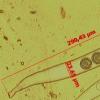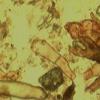
05-07-2011 21:30
Joseph PellicaniC'est mon premier envoie sur Asco france J'espère

05-07-2011 14:16
Marja PennanenHello.I found these this morning on my garden rubb

29-06-2011 21:54
Bonjour, J'ai trouvé en grand nombre sur un genê

01-07-2011 09:23
 Alex Akulov
Alex Akulov
Today I made a few new pictures of very small disc

01-07-2011 20:47
 Alex Akulov
Alex Akulov
Dear friends,have you some ideas about species lis

29-06-2011 11:14
 Alex Akulov
Alex Akulov
Dear friends.Yesterday evening I returned from a t

20-06-2011 18:40
En escama de un cono, de abeto ornamental. Hasta 2

29-06-2011 23:31
Bihain encore. Sur feuille morte de Populus tremul

29-06-2011 23:06
Bihain toujours, massif de massettes, sur gaines p
Scutellinia armatospora
Joseph Pellicani,
05-07-2011 21:30
J'espère que sa va arriver
Merci de confirmé ma détermination
Joseph
Daniel Ghyselinck,
05-07-2011 22:17
Re : Scutellinia armatospora
Salut Joseph et bienvenue,
Un peu court comme description, mais les poils et les spores semblent bien correspondre à S. trechispora. S. armatospora est un synonyme il me semble.
Amitiés,
Daniel
Un peu court comme description, mais les poils et les spores semblent bien correspondre à S. trechispora. S. armatospora est un synonyme il me semble.
Amitiés,
Daniel
Beñat Jeannerot,
06-07-2011 06:23

Re : Scutellinia armatospora
Adio Joseph,
Effectivement, c'est une récolte typique de S. trechispora.
S. armatospora (Denison) est une espèce américaine qui a été synonymisée par Schumacher (1990) à juste titre. La différence résidait sur la longueur des poils mais la vérification du type a montré des spécimens immatures et des poils réduits car mangés par des insectes. C'est donc bien un synonyme.
Les verrues tronquées sont caractéristiques.
Beñat
Effectivement, c'est une récolte typique de S. trechispora.
S. armatospora (Denison) est une espèce américaine qui a été synonymisée par Schumacher (1990) à juste titre. La différence résidait sur la longueur des poils mais la vérification du type a montré des spécimens immatures et des poils réduits car mangés par des insectes. C'est donc bien un synonyme.
Les verrues tronquées sont caractéristiques.
Beñat








 Scutellinia-armatospora-10-X-poil-JP--0001.jpg
Scutellinia-armatospora-10-X-poil-JP--0001.jpg